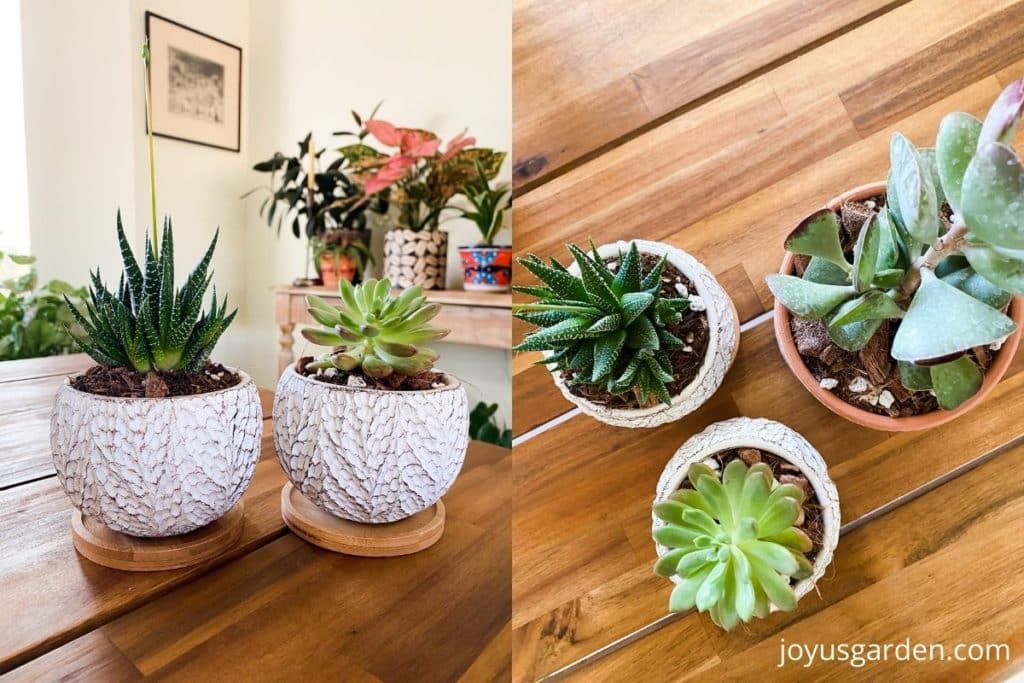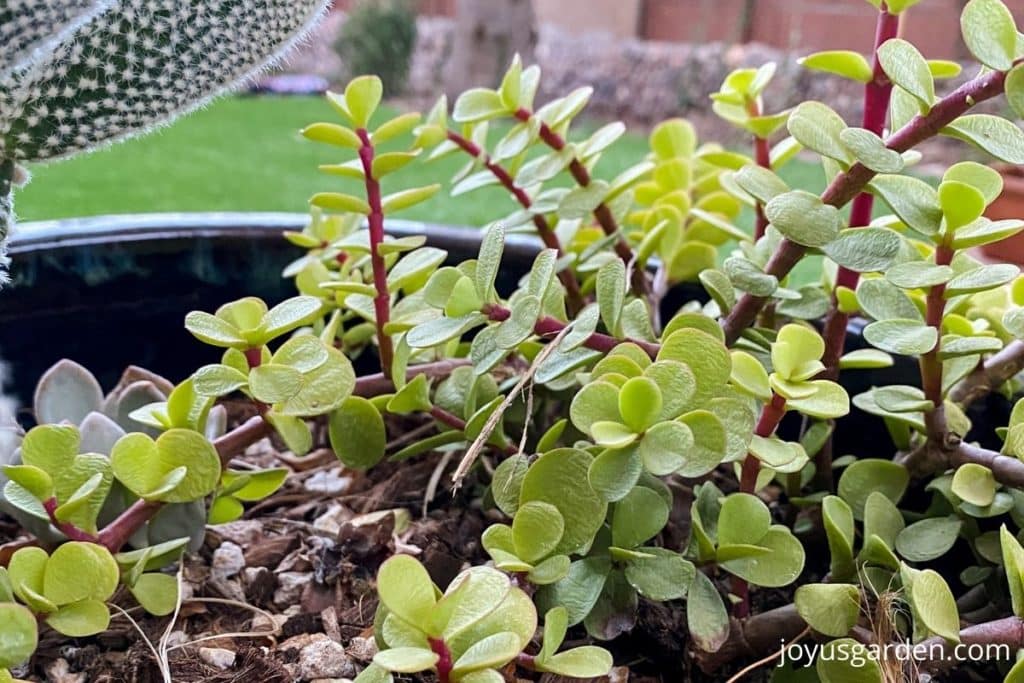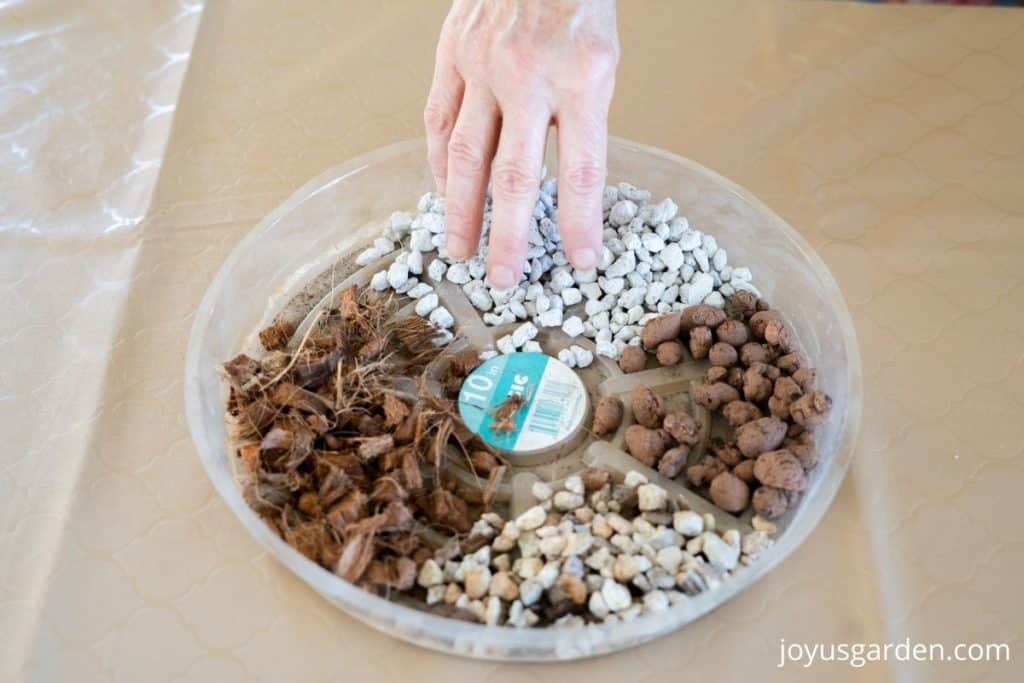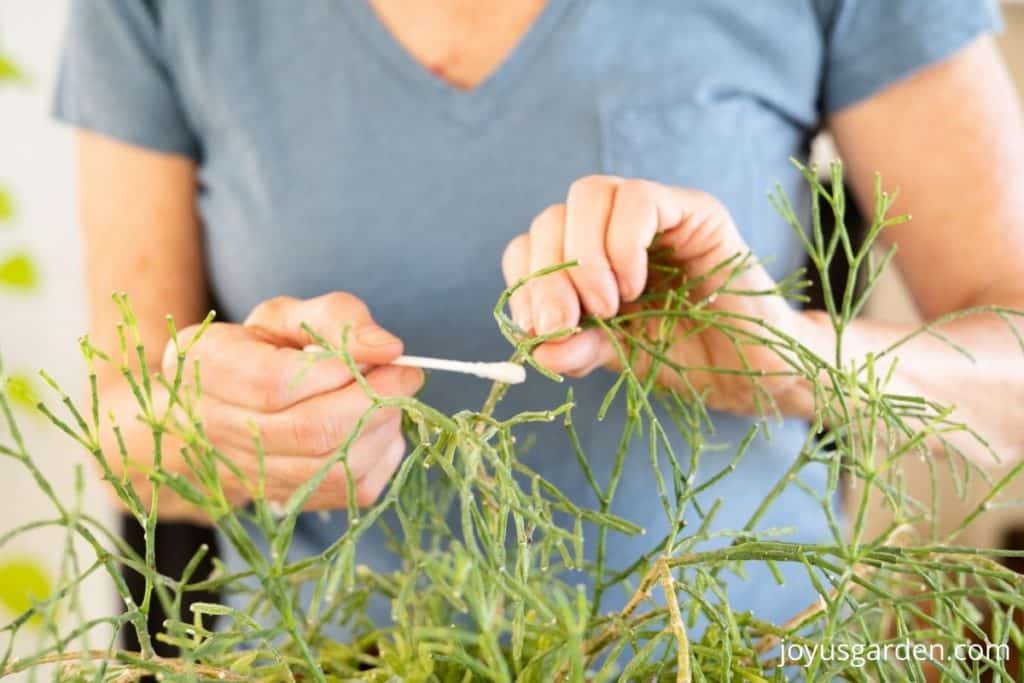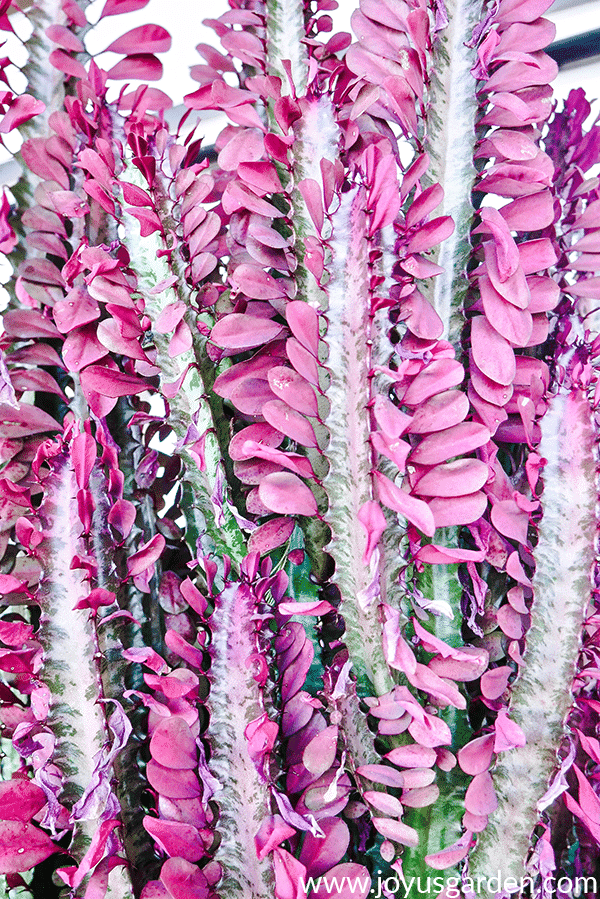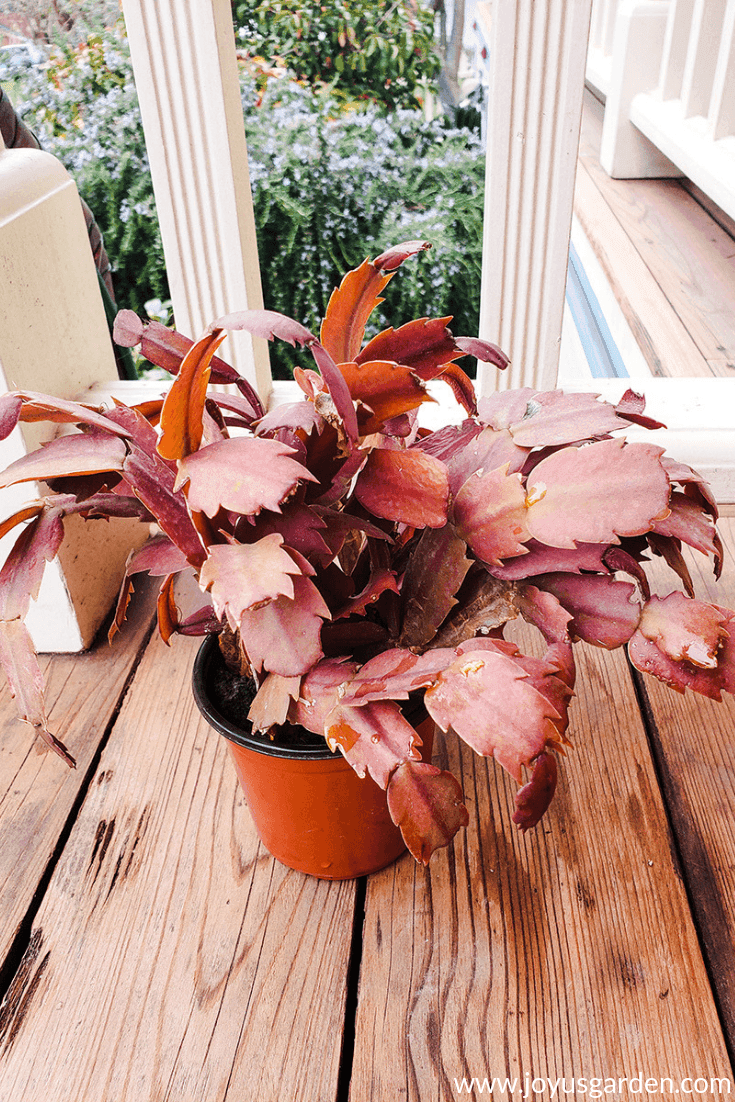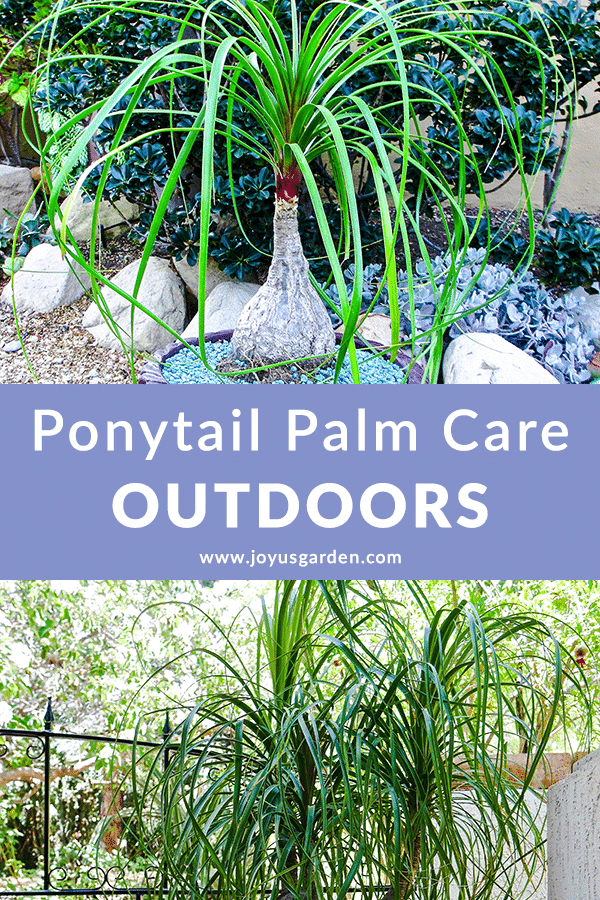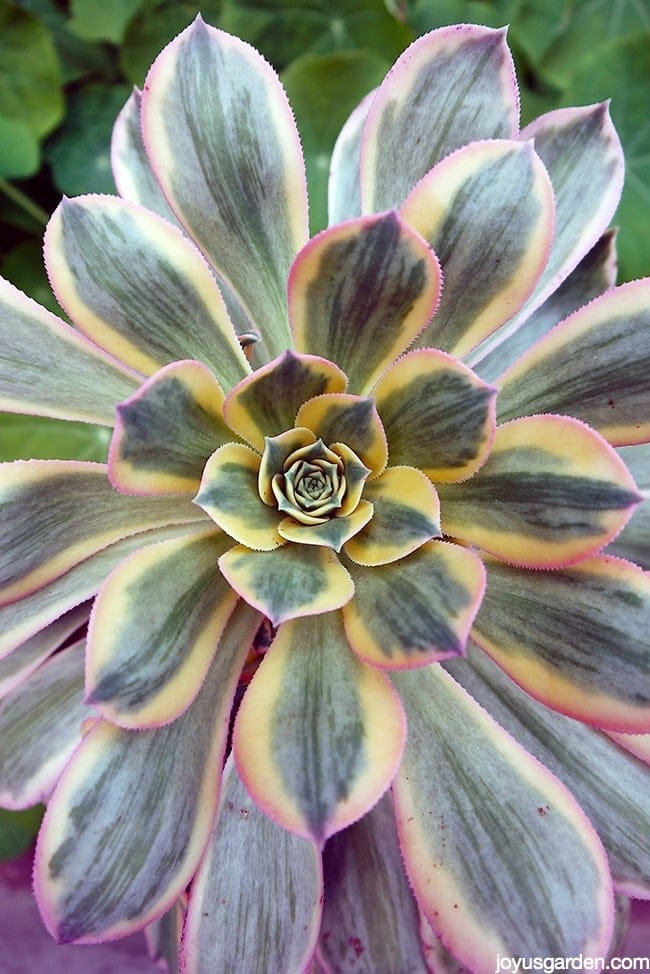Succulent Houseplants: 13 Problems You May Have Growing Succulents Indoors
Succulents are easy to grow indoors but they’re certainly not foolproof. Here are issues that can arise growing succulent houseplants, as well as solutions.
Talking succulent issues in the video below!
Problems That Might Arise Growing Succulent Houseplants
Have you ever wondered “why is my succulent dying?” There are a few common causes and many others that could come into play. Hopefully, none or just a couple of these things will be a problem for you.
I’m currently experiencing one of these issues with a couple of my succulents. You’ll find out what it is towards the end of this post. It’s a common occurrence with fleshy succulents!
1) The light level is too low
Succulents grow best indoors in bright natural light. A moderate to high light exposure is best.
If succulents are lacking the light they need and like, they’ll get leggy, spindly, and the leaves will lose color.
Solution: Move your succulents to a brighter location.
2) They’re in too much hot sun
Full sun exposure is fine, just not in direct sun or against the hot glass of a window. If your succulents are in west or south-facing windows, the leaves will probably burn.
Solution: Move them out of or away from the windows. 5′ is usually enough.
3) Your succulents are being watered too often
Their thick stems, fleshy leaves, and roots are full of water. Watering too frequently will cause your succulents to “mush out”. Overwatered succulents are a common problem!
In other words, the leaves will turn brown (or pale) and soft. And, you don’t want mushy succulent leaves because the plant may not recover.
Solution: Let the soil dry out between waterings.
Here’s a post dedicated to Watering Succulents Indoors.
4) Letting your succulents sit in saucers full of water
It’s best to have little if any, water building up. If this occurs on a regular basis, the soil will stay consistently moist and this can lead to root rot.
Solution: Empty the water out of the saucer if any runs through.
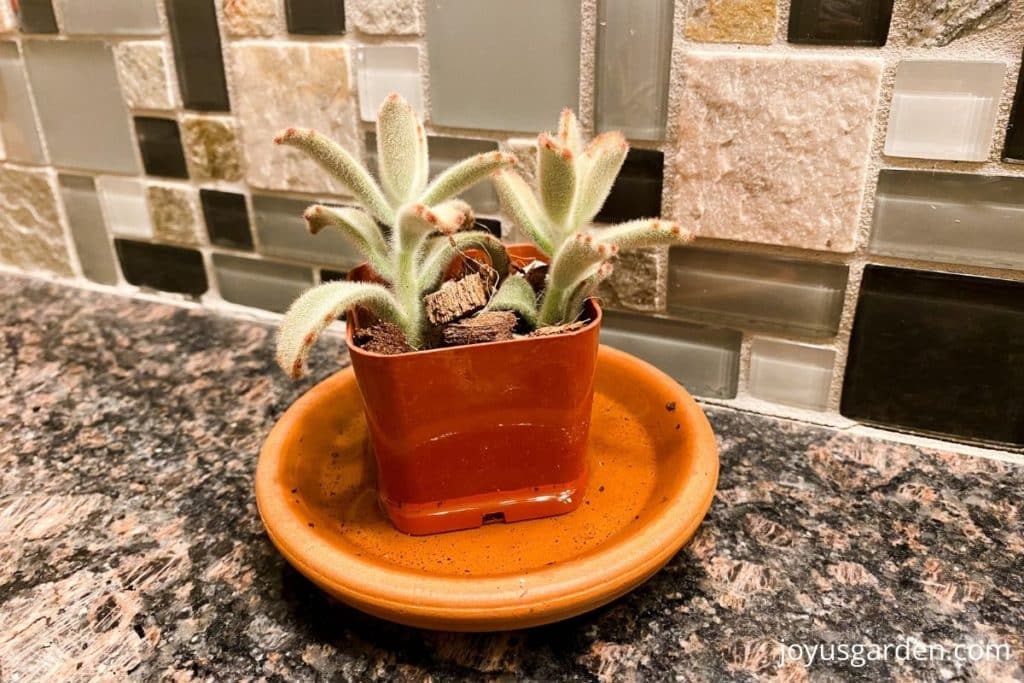
5) Not adjusting the care for the winter months
These are the colder, darker months with less sunlight. The lower the light your succulents are growing in, the less frequently you’ll need to water. And, your succulents may not be getting the light they need.
I can’t tell you how often to water your succulents indoors because they are many variables involved. I live in Tucson, AZ which one of the sunniest cities in the US. Plus, it’s very hot in summer so I water my succulents indoors once a week at this time. In the winter months, it’s every 2-4 weeks.
Solution: Knock back the watering frequency and move succulents to a location with brighter light.
6) The pots your succulent houseplants are growing in have no drainage holes
This may be an issue because the water could collect in the bottom of the pots causing root rot.
It’s not impossible to grow succulents in pots with no drain holes, but they much prefer to have the water flow out the bottom. I have 4 pots of succulents without drainage holes, but I plant and maintain them in a certain way.
Solution: Drill a hole in the pot or Plant and Water Them Like This. I’m going to do a new video on this subject and update this post in a month or 2.
7) Your succulents have sunken down below the rim of the pot.
I’ve seen this happen quite a bit as plants age and the soil sinks down. When the tops of root balls of your succulents have sunken more than 1″ below the top of the pot they’re growing in, this can lead to water collecting around the center of the plants. In turn, this leads to root rot.
Solution: Raise the succulents up in the pots. Lift up the root balls and add the soil to the bottoms of the pots to raise them. Don’t just dump soil on top of the root balls (a thin layer is fine, but not more than 1/2-1″).
8) You mist your succulents on a regular basis
Although every once in a while is fine, succulents don’t need it. You don’t want the leaves to stay constantly moist, especially if they’re growing in lower light and/or cooler conditions.
Solution: Don’t mist or spray your succulent houseplants. Save that for your tropical houseplants!
9) The succulents were very wet when you bought them
This could cause the soil to take longer to dry out, especially if they’re growing in potting soil.
This tends to happen when your plants are purchased at places like Trader Joe’s, Home Depot, Lowe’s, etc where they’re packed tightly together and are watered every day.
Solution: Let the soil mix go completely dry before watering again. You may have to repot them into fresh succulent and cactus mix to try and save the roots.
10) The soil your succulents are growing in is too heavy
Succulents like chunky soil that is well-drained and well aerated. It needs to be loose so the water can run through and air can get to the roots.
If the soil is too heavy, it holds water and causes the roots to stay too wet.
Solution: use a succulent and cactus mix or add pumice, perlite, coco chips, or pebbles to your mix to lighten it up. Here’s the DIY Succulent and Cactus Mix Recipe I use. My succulents in pots, growing both indoors and outdoors, love it.
11) The pots are too big
Succulents in general have a small root system. Excess soil mass means a greater chance of the mix staying too wet.
Solution: Pot your succulents into smaller pots.
12) Your succulents might get mealybugs or aphids
These are 2 pests that my succulent houseplants have gotten in spring. My Echeveria and Dancing Bones both have a touch of mealybugs. Keep your eye out for spider mites and scale as succulents are susceptible to them also.
Solution: Get any pests under control as soon as you see them. To spot treat the mealybugs on my 2 plants, I put 1/2 water and 1/2 rubbing alcohol in a shot glass and dabbed them with cotton swabs. After each dabbing, I submerge the swab into the mixture, making sure the mealybugs are meeting their demise.
Be mindful to look in the crevices where the leaves meet the stems as well as under the leaves as pests tend to hang out here.
I’ve found that rosette succulents are especially prone to mealybug infestations. They love to nestle inside that tight center growth so be on the look out for tiny specks of white cotton.
13) Succulent choice matters
This is not really a problem at first, but it can become one over time. There are succulents that do better indoors. Tried and true choices: Jade Plant, Aloe Vera, Christmas Cactus, Burro’s Tail, Panda Plant, Haworthia, Gasteria, and Hens and Chicks.
Solution: If you’re a beginning gardener, stick with the above choices. If you’re buying succulents online, many sites have a helpful category to look under like “succulents for indoors” or “low light succulents”. Succulents suited to grow in low light will do best in your home. Unless you have a lot of windows with a lot of natural light streaming in, stick with these plants.
I hope this helps you out with your succulent growing adventures!
Happy gardening,

